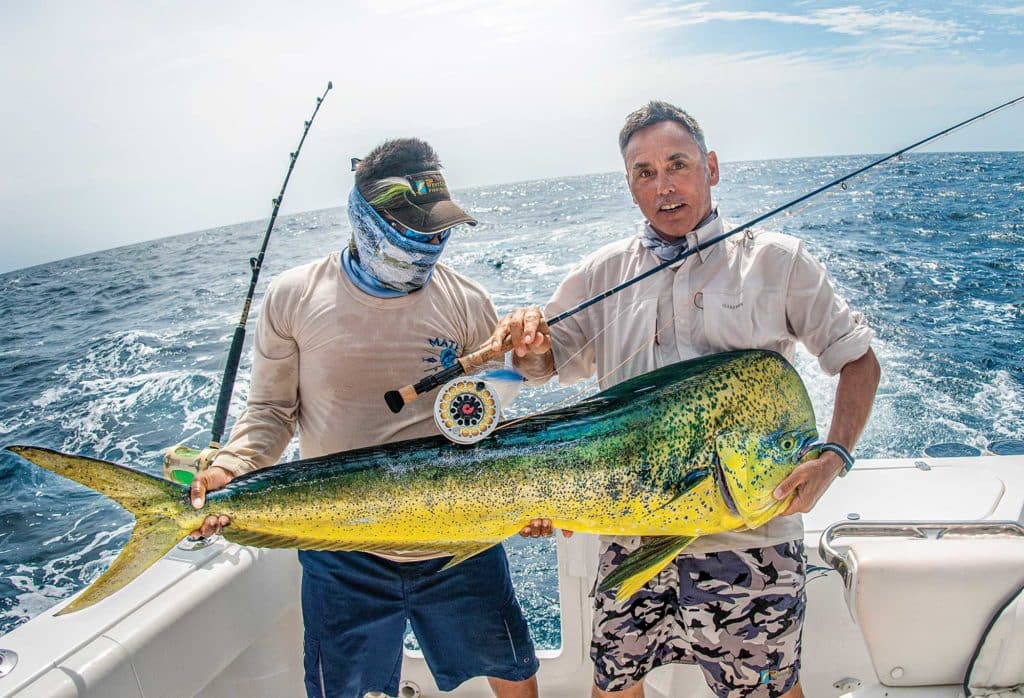
Living and guiding in southeast Florida, I have one of the most diverse and prolific fisheries in the country at my disposal. Dolphin are among the many species found on my stomping grounds off Palm Beach, and while they still peak here from mid-April through early July, and again from late August to early November, climate change has skewed their schedule, making them increasingly available year-round. This bodes well for fly-rodders who, with more time to hit the water under the right conditions, get to choose from the variety of tactics dolphin respond to, and select the strategy that best suits their preferred fishing style.
In Plain Sight
Anglers who frequently chase after inshore species while perched on the bow of a flats boat easily adopt a sight-fishing game plan that lets them hunt their target in similar fashion. It’s widely known that dolphin hang around floating debris, looking for forage using the flotsam as cover, so weed lines formed by winds and currents afford plenty of sight-fishing opportunities. But be sure to inspect any substantial floating object you come across, be it a shipping pallet, large palm frond or rope. Many are bound to have a dolphin escort.
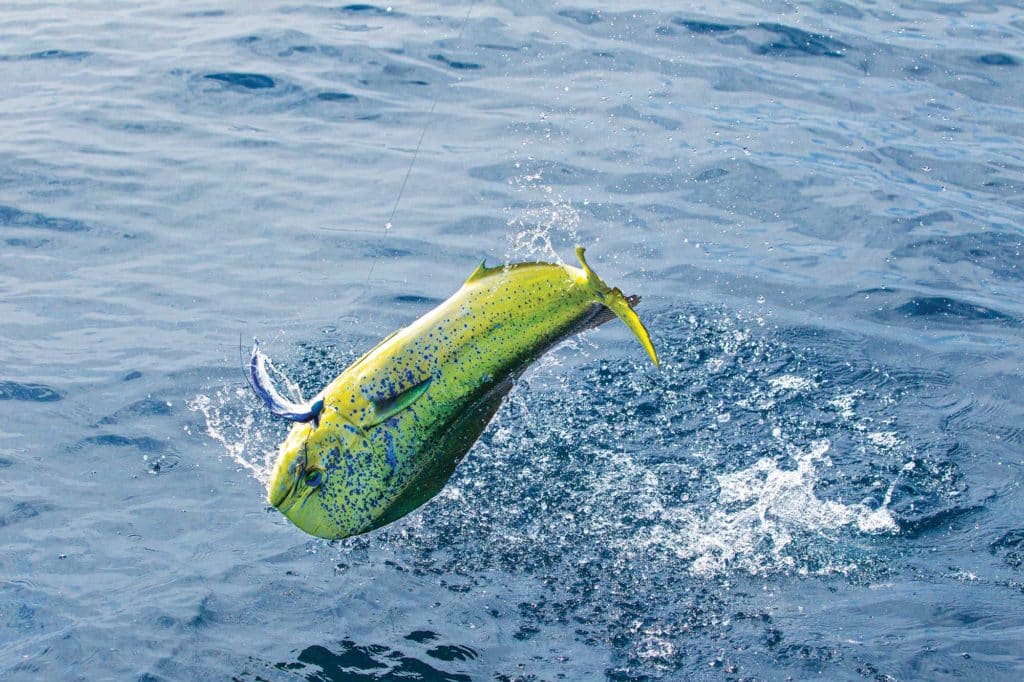
To avoid spooking fish or putting them on guard, I slow the boat down about 100 yards away and idle slowly during my approach, instead of running right up to the weed line or other flotsam. I position the boat to keep the sun at my back or the side for good visibility, shift into neutral when I am about 100 feet out, and just drift with the motor idling because the sound of the outboard often draws curious dolphin. You might spot some directly under the floating debris, a few foot away from it, or right under your boat.
Get Chummy
Chumming is a great tool to attract dolphin and keep them near the boat, especially chumming with live bait, which also cranks up the fish’s activity level. And if a school shows up, competition among schoolmates will be fierce, working in the angler’s favor. However, it’s easy to overfeed a pack of gluttons and have them turn off and wander away, so don’t go overboard with the chumming. Start with a fistful of bait chunks or a dozen liveys to get the dolphin’s attention and the competition for food going. Once the fish are revved up, scale down to a few pieces of cut or live bait every couple of minutes to keep them close and still chewing.
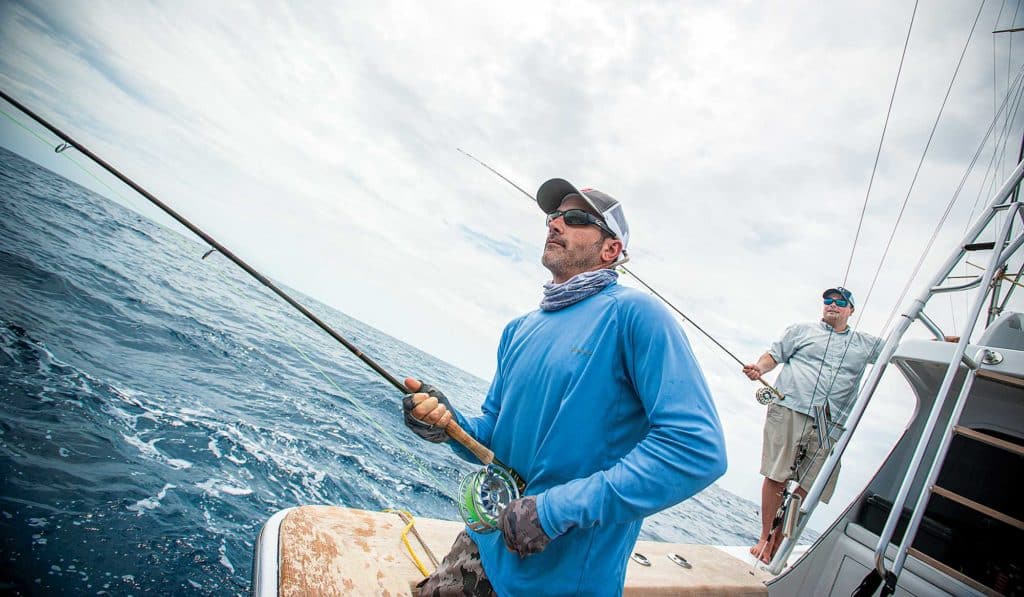
It helps to hook one up fast to get the rest of the school intrigued, or they will lose interest and move along, which can happen in as little as five seconds. Generally, the school will not leave a comrade behind. So keeping a hooked fish in the water should help ensure the rest stay in range cooperatively, giving you plenty of time to take your shots.
This recon method—often referred to as run-and-gun—is effective but also popular, so you will often have to share the ocean’s bounty with others. Unless invited to do so, it’s best for everyone to be courteous and avoid moving in too close to another boat actively fishing a floating object or fighting a fish.
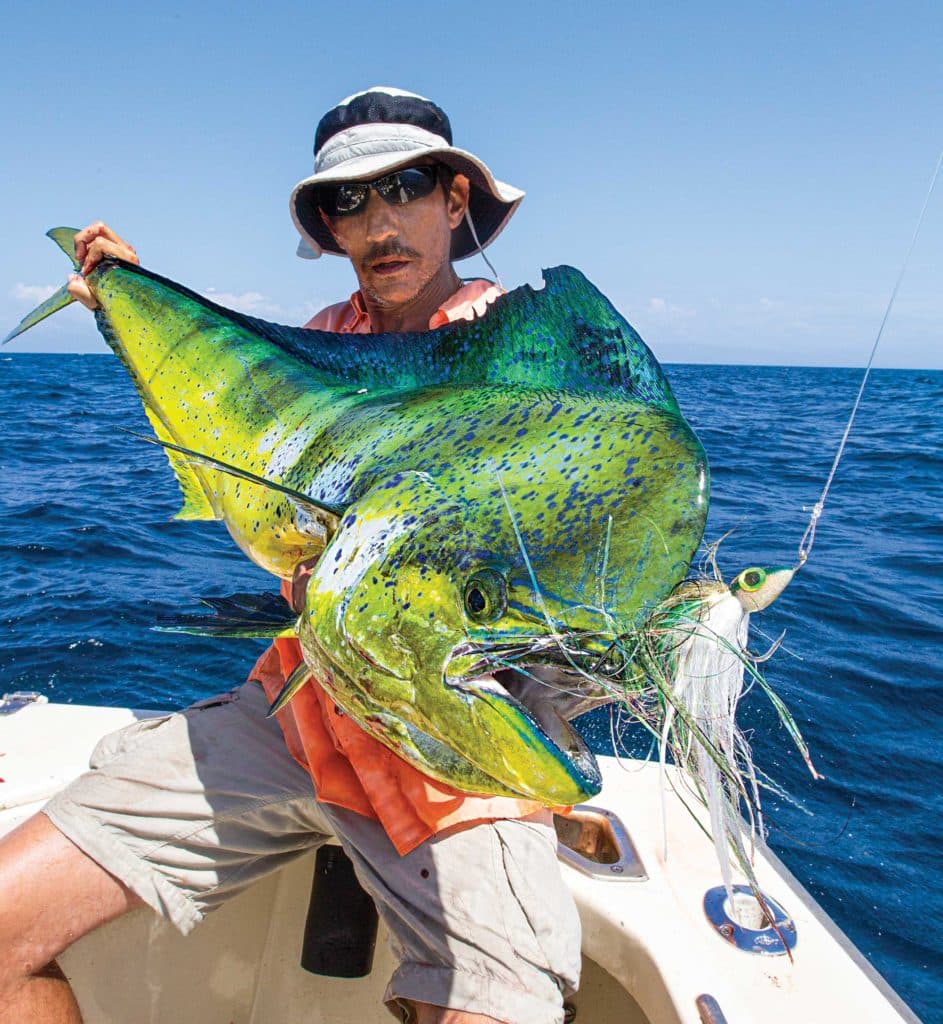
Bait ’n’ Switch
Dolphin can be teased and coaxed to take a fly with a bait-and-switch technique, similar to that perfected for billfish, but using 4- to 6-inch blue-and-silver or all-white squid skirts rigged with a strip bait. The natural scent and taste, plus the toughness to survive dolphin attacks, make them ideal teasers, and they are easy to match with flies of similar colors and silhouette. When a dolphin tracks or grabs one of the teasers, resort to the classic cat-and-mouse game of keep away to bring the fish within fly-casting range. Though undoubtedly productive, this tactic is best reserved for times when conditions aren’t conducive to sight-fishing, or whenever dolphin don’t appear plentiful and widespread.
Seal the Deal
A dolphin’s strike zone is its line of sight. Offshore, visibility underwater can be as much as 100 feet, so there really is no need to drop a fly right smack in front of a fish. Trust me, as long as your fly lands in the general vicinity where the fish can see it, a strike is usually inevitable. If the fly lands too close, the fish will either spook or—the more likely scenario—pounce on the fly so fast, you won’t have time to get the slack out of the fly line and set the hook before the dolphin spits the fly.
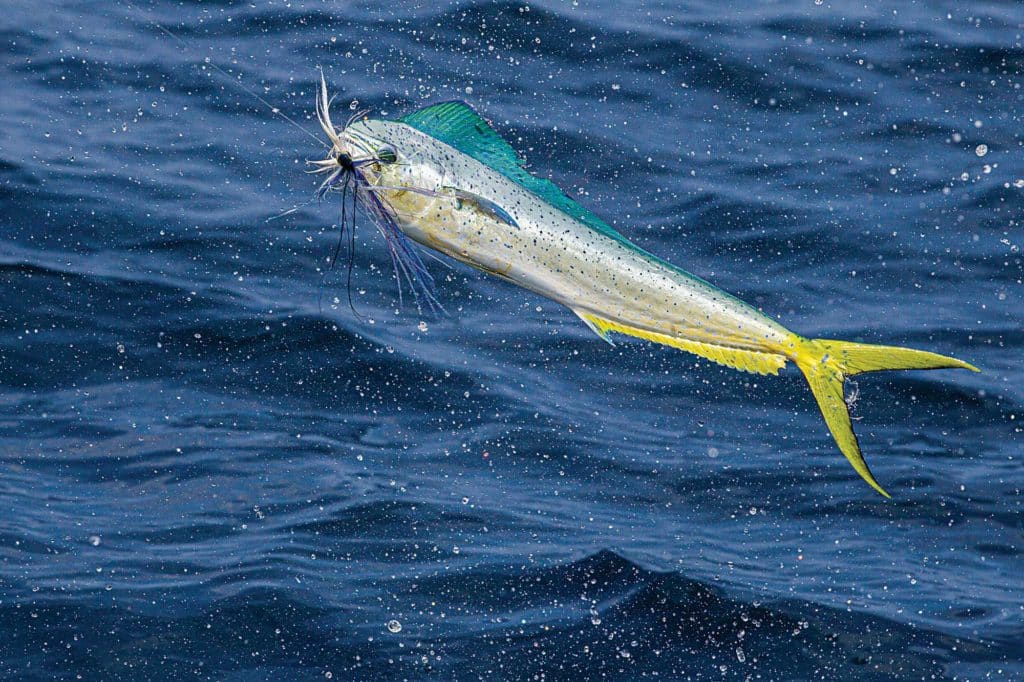
While spooking one dolphin out of a school may not seem like a big deal, the rub is that the fish won’t fall for that fly again. Even if it makes more passes, the fish will frequently continue veering off the fly, and when its schoolmates see this, they will become wary and lay off the fly as well. To avoid this, simply cast 10 or 20 feet ahead of the fish, take up the slack, and quickly impart action to the fly. Then focus on setting the hook when you feel the fish rather than the instant you see it take, which results in more misses than solid hookups.
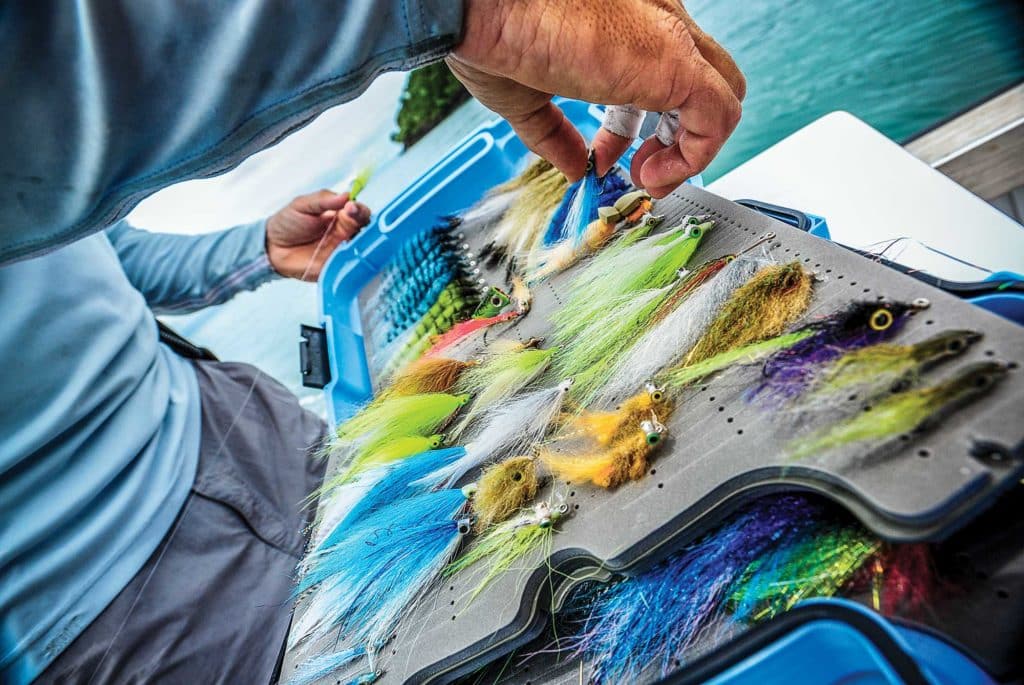
Gearing Up
Where tackle is concerned, schoolies up to 8 pounds are an absolute hoot on a 6-weight rod, but fish of 10 to 20 pounds call for 8- to 10-weight rods. Dolphin over 20 pounds can really test a 10-weight, so it pays to carry a 12-weight outfit in case a big bull makes the scene. They have a habit of sounding several hundred feet following their initial surface display, then turning broadside up and doing a death spiral like tuna, causing the angler to spend 30 or more minutes bent over the gunwale, fighting for every inch of backing.
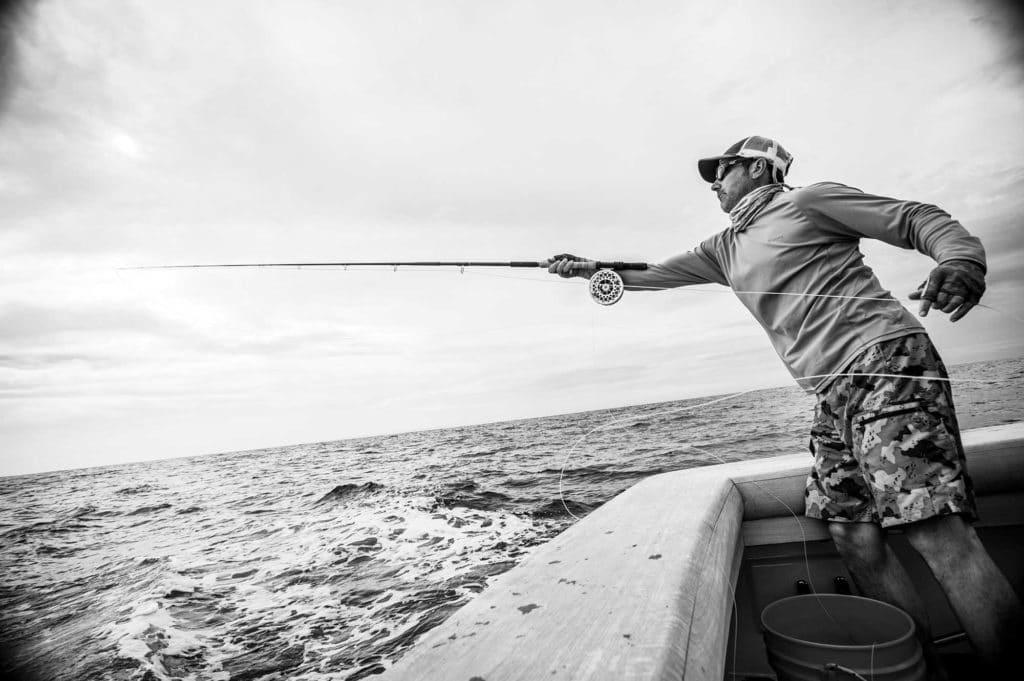
When it comes to fly lines, I prefer an intermediate, which casts easier in the windy conditions often encountered offshore. Floating lines are nice for working poppers, but not essential. And don’t forget a fast-sinking line for working deep under floating debris.
I recommend fluorocarbon or monofilament leaders, with 30-pound bite tippets for small to medium fish, and 40-pound for 20-pounders or bigger. Dolphin have teeth, and while they are not sharp enough to require wire, they will wear through lighter tippets after repeated thrashing during battle.
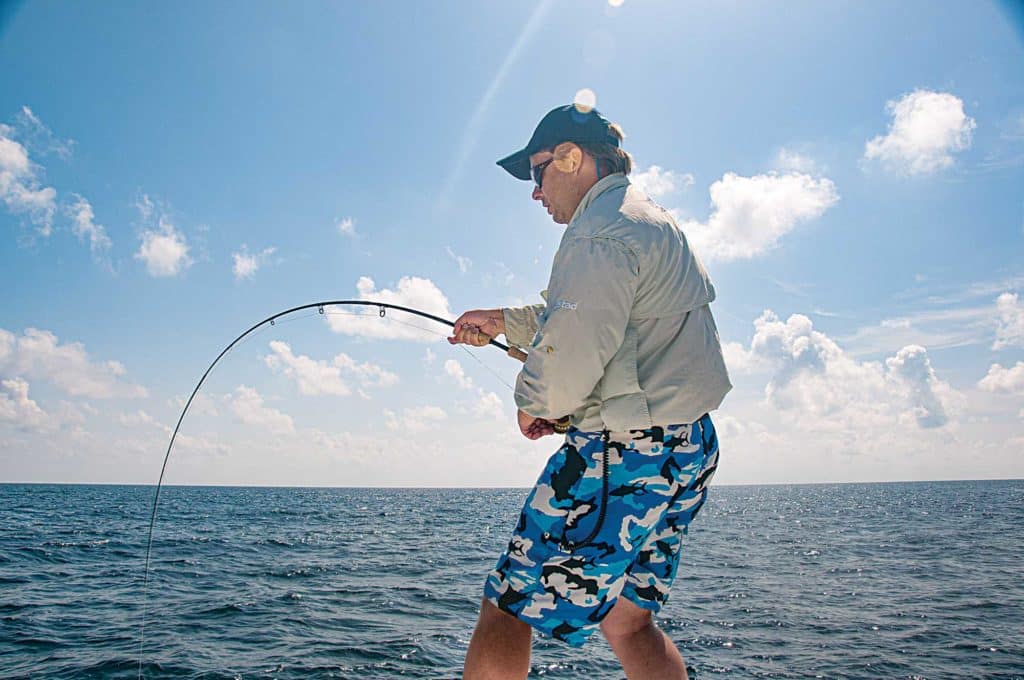
As for flies, I generally use streamers that mimic baitfish, but dolphin will also eat shrimp patterns, assorted poppers, and squid imitations. If you chum, I suggest you match the chum in size and color as closely as possible.
Keep or Let Go
Remember that no matter how tired they look near the end of the fight, dolphin still have the energy to ricochet wildly after coming over the gunwales, slamming hard against anything in their path. It’s best to gaff a fish and put it right into the fish box, unless you plan to release it. If you are going to let a fish go, forgo the landing net, which can remove scales and get the fly or leader tangled in the mesh. Instead, have a buddy put on a pair of gloves and lip-lock the dolphin, gripping its jaw firmly long enough for the fish to settle to remove the hook, and then send the dolphin on its way.
Want Expert Guidance?
Capt. Scott Hamilton is a seasoned charter captain specializing in fly-fishing for a variety of offshore gamefish in southeast Florida waters. To book a trip in Palm Beach aboard his 26-foot Power Catamaran, contact Hamilton Fly Fishing Charters by calling 561-745-2402, or visiting flyfishingextremes.com.









